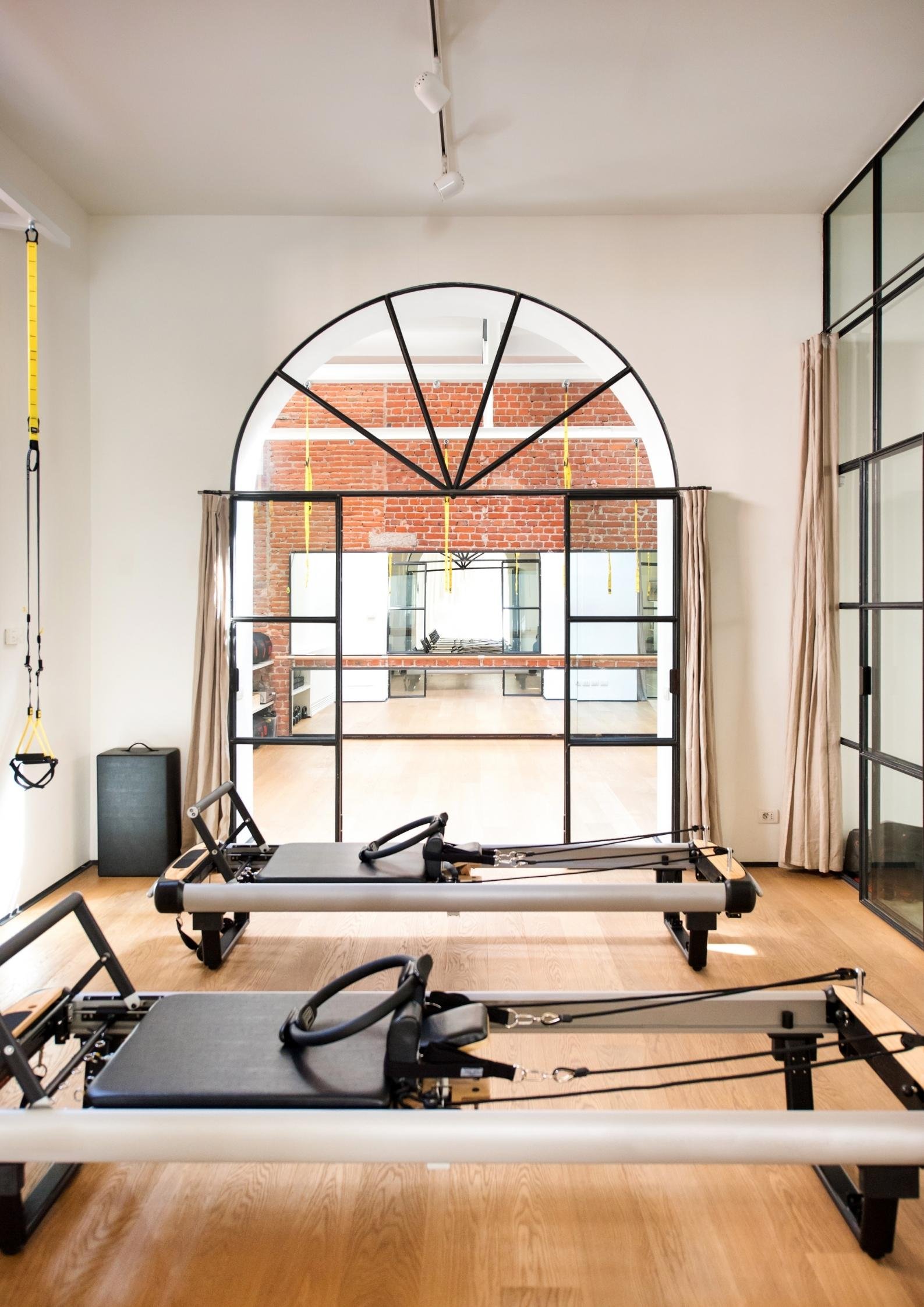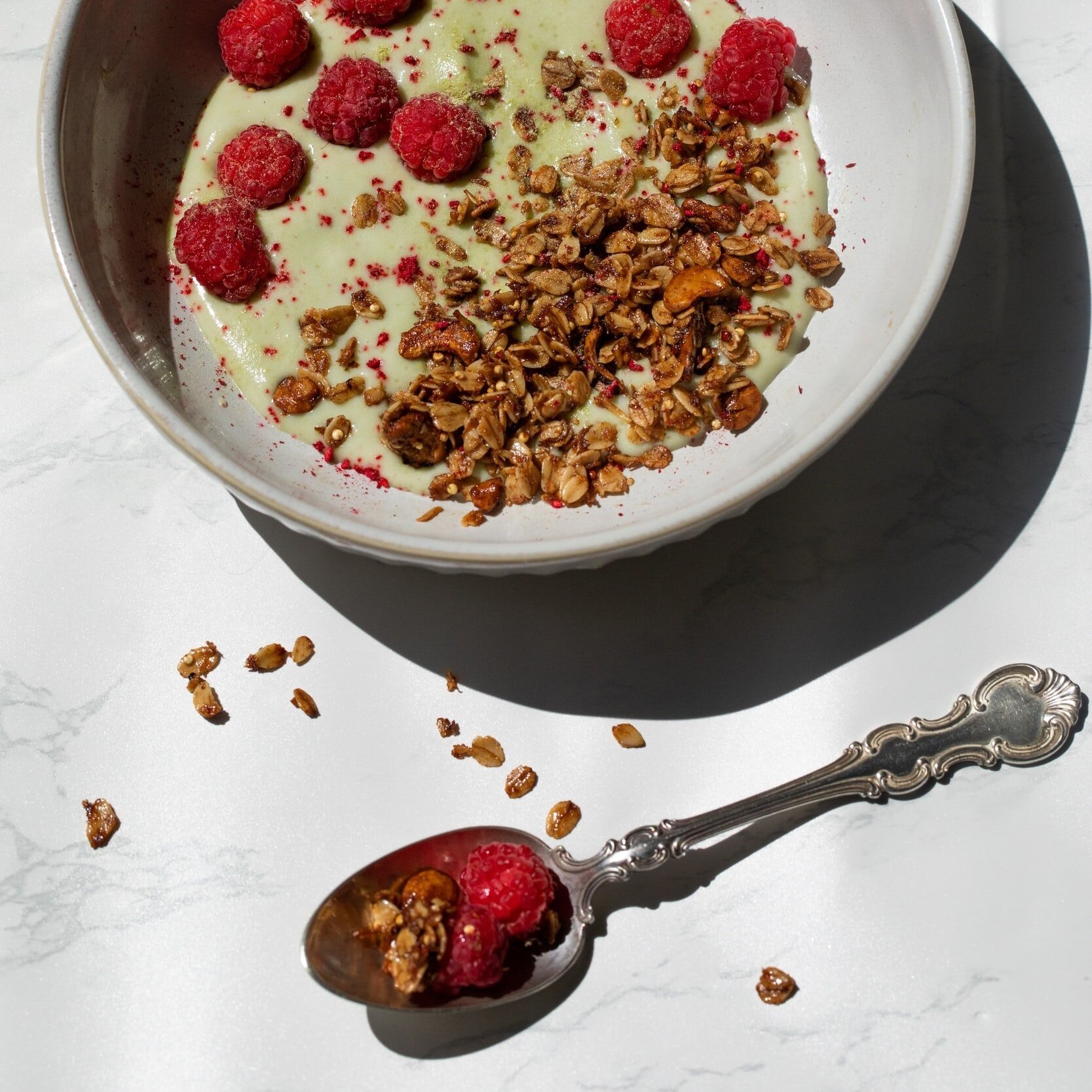Getting Started With Studio Pilates
W&S Health and Wellness Editorial Team
SHARE ON:
DISCLAIMER: Please consult a qualified healthcare professional before starting any new health and wellness regimen. Always seek the advice of your physician or other qualified health provider with any questions you may have regarding a medical condition or dietary change. Never disregard professional medical advice or delay in seeking it because of information provided in this article. The content is for informational purposes only and should not be considered a substitute for professional medical advice, diagnosis, or treatment. Always consult with your healthcare provider to address any health concerns you may have. Before reading the following content, we also suggest reading our full disclaimer statement here.
Some of the links on this post might contain affiliate links. If you use any of these links to buy something we may earn a commission. For more information, please check out our complete disclosure statement. Thanks so much for supporting our free content!
We saw this amazing TikTok from @tamiyarodriguez (check out her content!) and got inspired to make this article about getting started with studio pilates.
We’ve all heard of the pilates princess aesthetic on TikTok. However, unlike many aesthetic trends on the platform, this one seems to have kept its relevancy and for good reason. While we LOVE an at-home workout situation, we still recommend checking out studio pilates.
Studio pilates is a great workout for people at any fitness level, new or beginner. Many instructuors are even trained to help women that are pregnant, postpartum, or dealing with chronic conditions that might make exercising difficult. That’s why we’ve made this in depth-guide all about studio pilates, so you can get started on your own #pilatesprincess journey.
Learn about what studio pilates is, its benefits, and what you should know before heading to your local pilates studio!
What Is Studio Pilates?
Studio pilates, originally called Crontology, is a workout created by German physical trainer Joseph Pilates during the early 20th century. It is a form of mind-body exercise that focuses on the core, body strength, flexibility, muscle control, and breathing.
There are six types of pilates:
Classical Pilates
Classical Pilates is the original pilates system created by Joseph Pilates in the 1920s, capturing both mat and apparatus work. It differs from other pilates variations because it focuses on the original transitions described by Joseph Pilates and has a heavy focus on the posterior pelvic tilt and other forms of postural preferences.
Mat Pilates:
Mat Pilates is pilates performed on a mat and is inspired by the mat exercises outlined in the original pilates system.
Reformer Pilates:
Reformer Pilates is similar to the mat format above. However, this type of pilates is distinct in its use of a reformer machine. The reformer is a bed-like apparatus with resistance springs that roll back and forth on wheels. Due to the increased resistance of the reformer machine, this form of pilates can be more intense at the advanced level.
Contemporary Pilates:
This type of pilates varies depending on the instructor’s education. It is informed by both the classical pilates system and contemporary research from fields such as biomechanics, physical therapy, etc.
Stott Pilates:
This form of pilates was created by ballerina Moira Merrithew, who originally studied pilates after a neck injury. Thus, this form of pilates is hyper-focused on rehabilitation and incorporates tools such as foam rollers and stability balls. Also, unlike the classical approach, the spine stays in its natural curve throughout the routine.
Winsor Pilates:
Winsor Pilates was created and popularized by Mari Winsor. This form of pilates focuses on weight loss and burning calories. Winsor pilates remixes the classical approach with non-traditional transitions to maximize results.
What Are The Benefits Of Studio Pilates?
Studio pilates has a range of benefits, other than the more obvious benefits like calorie burning and helping you get abs. These benefits include:
Improves Bone Density: Because much of the exercise you’ll do at a pilates studio involves resistance, you pull muscles on bones and create tension that helps strengthen them. Bones are living tissues that change over time based on the forces placed on them. The more pilates you do, the more your bone reacts by creating more of itself (aka. becoming denser!).
Eases Back Pain: Core work is an integral part of any pilates you take up, making muscles surrounding your trunk and hips the star of the show. Luckily, these areas are directly connected to the strength of your back! Even more, pilates exercises provide a nice stretch for the back muscles and teach proper alignment of the spine. Doing so often tackles the underlying causes of back pain, such as poor posture.
Increases Flexibility and Mobility: Flexibility and mobility refer to how passively or actively your muscles can move through a range of motion. Studio Pilates moves require a wide range of motion in multiple planes to complete, making them excellent tools for those wanting to improve their flexibility and mobility.
Reduces Stress and Anxiety: A fundamental aspect of pilates is the breath principle. The breath principle refers to focusing and connecting to your breathing while doing movements. By focusing on deep breathing, your central nervous system is signaled to relax. Therefore people who do pilates will often feel very calm and peaceful during and after.
What Should I Know Before Starting Studio Pilates?
Pilates Looks Different For Different People
Whether you are pregnant, older, injured, or new to working out, there is for sure a pilates regime that will work for you. Pilates is one of the few exercises made in mind for people of all ages, fitness levels, and body types.
So, don’t be worried when you start pilates. Be open and honest with your pilates studio and instructors about your needs and concerns, and they will almost certainly be able to help you wherever you are and with whatever needs you may have!
You Might Want To Invest In Some New Workout Gear
Pilates can technically be done in anything, but it’s suggested that you invest in some proper gear to make the journey a bit easier at the start. Body-hugging gear is usually the safest option, especially if you are at a pilates studio where equipment or a reformer can snag loose-fitting clothing. Also, tighter clothing allows your instructor to see your movements better, and they will therefore be able to assist you during the exercise better.
Another thing to consider investing in is studio socks. These tight-fitting socks have little rubber grips inserted into them at the bottom to help with slipping. Again, studio pilates requiring equipment or a reformer is probably best done with socks.
Eat Something (If You Can) Before Class At An Appropriate Time
While you shouldn’t try and scarf down a huge meal before heading to your pilates studio, you might not want to show up on an empty stomach either. Pilates is a type of strength training and requires a lot of energy from your body to perform well. Thus, it is recommended that you try and have a small, light snack about 45 minutes before a pirates session. Examples include:
A handful of nuts
A small cup of Greek yogurt and berries
Hummus with carrots and celery
A banana with a spoonful of peanut butter
Studio Pilates You Can Try At Home Today
Want to get started doing studio pilates at home? For those on a budget, we suggest checking out these at-home Pilates workout videos by youtube creators:
1.
Blogilates
Our Favorite Blogilates Workout
2.
Isa Welly
Our Favorite Isa Welly Workout
3.
Move With Nicole
Our Favorite Move With Nichole Workout
For those who have a little extra spending money and want something more reliable and individualized, we suggest checking out a Pilates studio near you!
W&S Approved Studio Pilates Essentials
When embarking on your studio pilates journey, having the right equipment can greatly enhance your experience and results. To align with your conscious and sustainable lifestyle, we've curated a list of W&S approved essentials that prioritize both your well-being and the well-being of the planet.
When shopping for these studio pilates essentials, keep in mind the following tips to ensure your choices align with your sustainable values:
Material Matters: Prioritize items made from eco-friendly, biodegradable, or recycled materials.
Certifications: Look for certifications such as GOTS or OEKO-TEX Standard 100, indicating sustainable and safe manufacturing processes.
Durability: Choose well-made products that will stand the test of time, reducing the need for frequent replacements.
Ethical Production: Support brands that prioritize fair labor practices and treat their workers ethically.
Packaging: Opt for items with minimal or recyclable packaging to reduce unnecessary waste.
By selecting the W&S approved studio pilates essentials, you're not only investing in your practice but also contributing to a healthier planet and a more sustainable future. Your conscious choices make a difference, both on and off the pilates mat. Here’s our recommendations for those in the market for new pilates studio gear:
1. Pilates Mat:
A high-quality pilates mat is a foundation for your practice. Look for mats made from eco-friendly materials such as natural rubber or cork. These materials are biodegradable and sustainable, reducing your environmental impact. Seek mats with non-toxic, water-based inks for printed designs and a durable construction that can withstand regular use.
Our W&S Approved Recommendation:
Travel Yoga Mat, Jade Yoga
2. Grip Socks:
Grip socks offer stability and prevent slipping during pilates sessions. Opt for brands that use organic cotton or recycled materials to minimize the use of synthetic fibers. Look for non-slip soles made from natural rubber to ensure a secure grip without compromising the environment.
Our W&S Approved Recommendation:
Travel Yoga Mat, Jade Yoga
3. Leotard:
A comfortable and functional leotard provides freedom of movement and support during pilates exercises. Choose brands that prioritize ethical manufacturing practices and use sustainable fabrics like organic cotton or bamboo. Look for certifications such as GOTS (Global Organic Textile Standard) to ensure the material's authenticity.
Our W&S Approved Recommendation:
Black Cami Unitard, Girlfriend Collective
4. Water Bottle:
Hydration is essential during your pilates sessions. Opt for a reusable water bottle made from materials like stainless steel or glass, as they are durable, non-toxic, and can be easily recycled. Avoid single-use plastic bottles to reduce plastic waste and contribute to a greener future.
Our W&S Approved Recommendation:
Juniper 1L, bkr











